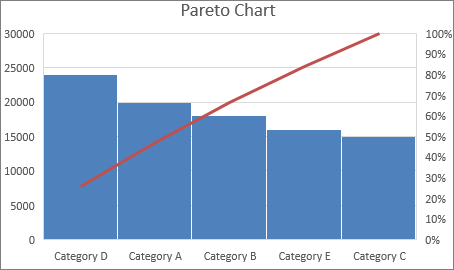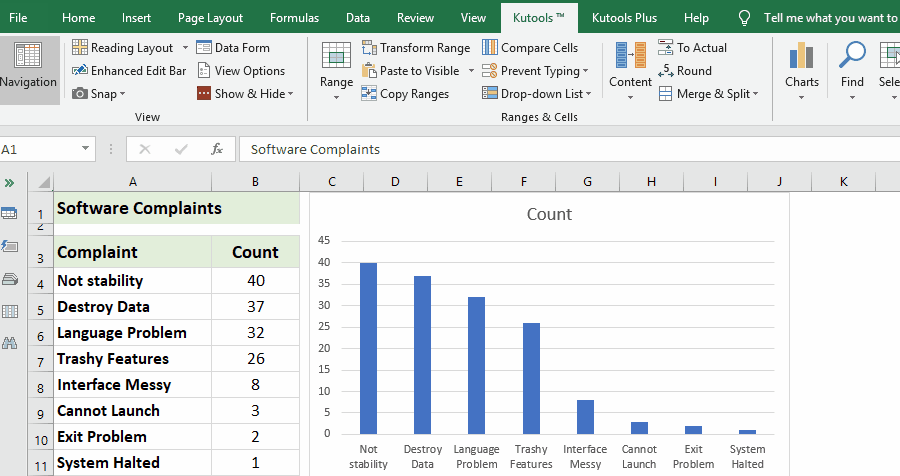

The 80/20 Rule states that nearly 80% of the effects come from 20% of the causes.
How to draw pareto chart in excel 2013 software#
Pareto Charts are widely used in lean manufacturing, healthcare, productivity and business, wealth distribution and economics, software development. The goal is to reduce the largest bars identified in the chart, as their elimination will do more for the overall improvement than reducing the smaller bars first.

Separating the elements of a problem in a Pareto Chart helps teams understand where to direct their improvement efforts. The purpose of a Pareto Chart is to separate the most significant aspects of a problem from the trivial ones. It can also indicate areas for deeper investigation. A Pareto Chart can also be used to bust a myth, for example, in reviewing historical beliefs about what is really causing a problem.

It also helps to highlight high-priority areas where you need to concentrate your initial improvement efforts to achieve the greatest gain. The Pareto Chart is used during the diagnostic phase of any quality improvement project. When it comes to productivity, the Pareto Principle is based on the idea that 80% of the results we achieve come from 20% of the actions we take. The Pareto Principle is also known as the Pareto Rule and the 80/20 Rule and is a general reminder that the relationship between outputs and inputs is not balanced. The principle asserts an unequal relationship between outputs and inputs. The Pareto Principle is named after the economist Vilfredo Pareto, who specifies that 80% of consequences (results) come from 20% of the causes (actions). However, some of the trivial many may be low-hanging fruit or easy to reduce or eliminate, and some may be high risks and need to be addressed as a priority. So if they are reduced or eliminated, they’re not going to make a huge impact on minimizing the overall problem. The trivial many causes are only contributing to 20% of the problem. And the vital few are the causes that are contributing to 80% of the problem. So the vital few are the priority areas that need to be addressed in order to make a major improvement. The data points above the 80% line indicate the trivial many categories. The cumulative percent data points that fall under the 80% line indicate the category is known as the vital few. And this line assists frequency in the determination of the 80/20 rule or the Pareto Principle. The last component of the Pareto Chart is the 80% cut-off line. In other words, the cumulative total of data relating to each bar. The right Y-axis, or, the right-hand vertical axis, is the cumulative percent. The left y-axis can also be presented as a percentage. In other words, the number or the count of cases or observations. The left hand or the vertical axis is the frequency of observations. That’s why it has a Y-axis on the left and the right. And the categories generally reflect either problem areas in a process or the causes of a problem. It’s non-numeric data, so you can’t take the average or the median of this particular data. In other words, it’s data that could be grouped by name. The X-axis or the horizontal axis in a Pareto Chart displays categorical data, also called nominal data. A Pareto Chart can be either a simple bar chart in descending order or a more sophisticated, Dual Y-Axis chart with a cumulative percent line and an 80% line included in the chart. The Pareto Chart assists the quality improvement team in focusing on areas of improvement with the greatest impact. The height of the bars reflects the frequency or the impact of the problems. Pareto Chart is a bar chart sorted in descending order from the highest frequency to the lowest frequency from left to right.


 0 kommentar(er)
0 kommentar(er)
